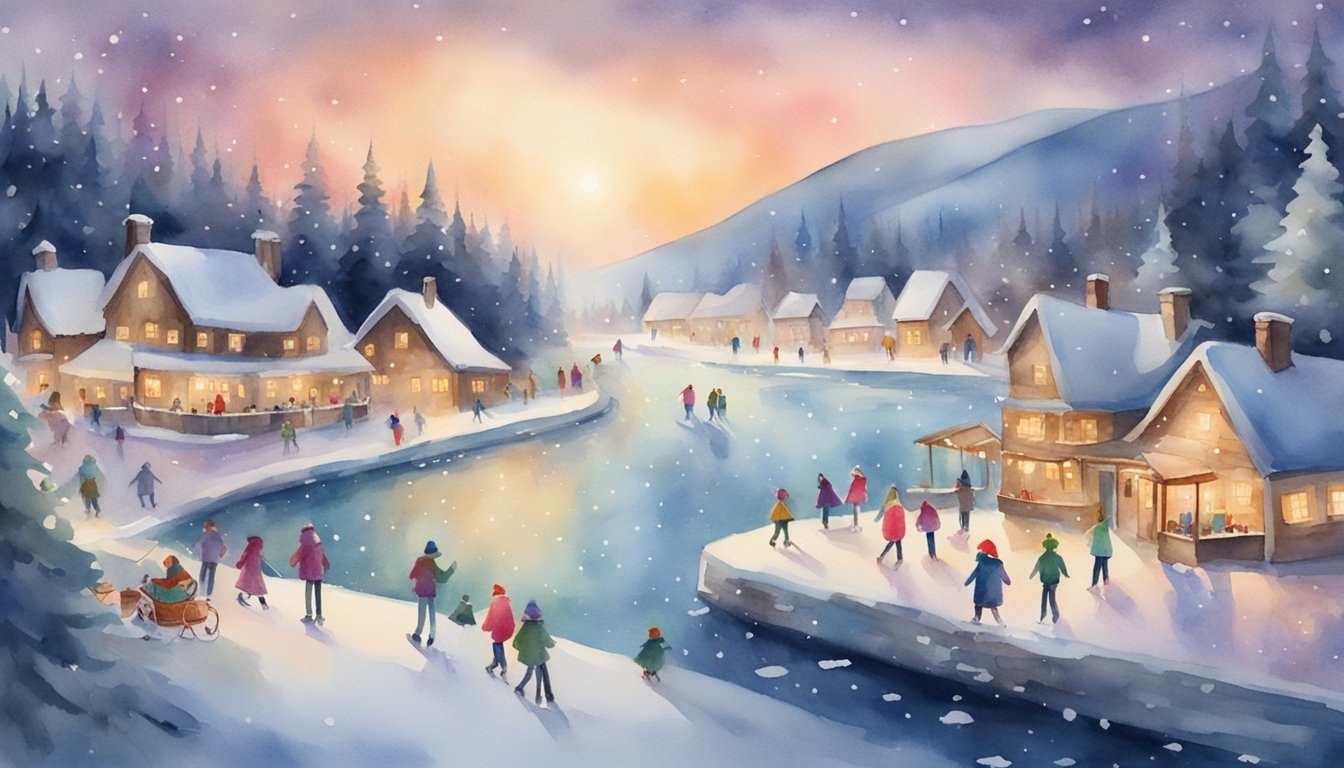Holiday Traditions and Celebrations
During the winter season, vibrant traditions warm the hearts of many across the globe. From Christmas to Hanukkah, and Kwanzaa, these holidays offer a glimpse into rich cultural practices and values.
Christmas: Season of Joy
Christmas, celebrated on December 25th, is a holiday that commemorates the birth of Jesus. For Christians, it is a time of joy and reflection. Families come together to exchange gifts, decorate the Christmas tree, and engage in caroling. The figure of Santa Claus also plays a central role, particularly in the excitement of children anticipating gifts on Christmas morning.
Hanukkah: Festival of Lights
Hanukkah, or Chanukah, is a Jewish holiday that honors the rededication of the Second Temple in Jerusalem. This eight-day Festival of Lights features the lighting of the menorah, with an additional candle being lit each night. Traditional foods like latkes are enjoyed, and children often play games with a dreidel as a symbol of the miracle associated with the holiday in Judaism.
Kwanzaa: A Celebration of African Heritage
Established by Maulana Karenga in 1966, Kwanzaa takes place from December 26th to January 1st. This holiday celebrates African heritage and is centered around the Nguzo Saba, or seven principles, which include unity, self-determination, cooperative economics, creativity, and faith. Throughout the week, families and communities engage in activities that emphasize these values, fostering a celebration of African culture and community.
Winter Holidays Around the World

Winter holidays embody a diverse tapestry of cultural traditions, bringing together family, religious observances, and ancient customs. From the fireworks exploding in Chinese skies to mark the Lunar New Year to the reflective nature-centric celebration of the Winter Solstice, each festivity offers a unique perspective on the colder months.
Lunar New Year: Celebrations in China
In China, the Lunar New Year, also known as Spring Festival, marks the beginning of a new year on the lunar calendar. The festivities, starting from the first day of the lunar year, last for about 15 days, culminating in the Lantern Festival. Streets come alive with the vibrant red of decorations and lanterns, symbolizing prosperity and good fortune. Families gather for sumptuous feasts, enjoying traditional foods such as dumplings and giving out red envelopes filled with money, known as “hongbao,” to children as a token of luck and good wishes.
Las Posadas and Dia de Los Reyes: Mexican Traditions
Las Posadas is a nine-day celebration leading up to Christmas, reenacting Mary and Joseph’s pilgrimage to Bethlehem. Each night, a procession travels to a different home, symbolizing the couple’s search for shelter. When the procession is granted “posada,” or shelter, the festivities begin, often with the breaking of a piñata. Following Las Posadas, on January 6, Dia de Los Reyes is observed to honor the Three Wise Men’s visit to the baby Jesus. This day is marked by the giving of gifts and the sharing of Rosca de Reyes, a traditional sweet bread, in which a small figurine is hidden, representing the hiding of Jesus from King Herod.
Winter Solstice: Pagan and Nature Festivities
The Winter Solstice, occurring on the darkest day of the year, is a time-honored celebration rooted in pagan traditions, honoring the return of the sun. Yule, or Yuletide, is one such festival observed during the winter solstice period. Celebrants might burn a Yule log, a custom believed to bring good fortune. The lighting of candles represents the sun’s light and warmth piercing the long winter nights, heralding the lengthening days ahead. In some traditions, evergreen wreaths are hung, and homes are decorated with natural elements to symbolize life’s persistence even in the depth of winter.

